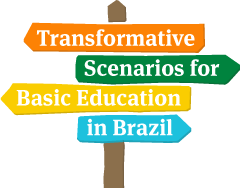Peregrine Falcon
In the Peregrine Falcon scenario, the influence of the business perspective is consolidated, with a significant increase in the transfer of public resources to private educational institutions (for profit and non-profit) through agreements, public-private partnerships and scholarships. The State maintains the role of provider, regulator, evaluator and funder, but relinquishes being the main executor of policies and being responsible for educational services. Education focuses on the improvement of human capital: skilled and specialized labor for the market, and the focus is on proficiency – measured by standardized, external, large-scale assessments. There is progress in quantitative access to education, but very little in quality. There is a single curriculum and educational materials are standardized. A results-based and performance-based model prevails, and ranking is a major concept in this scenario. The system of social participation is weakened and is now limited to the freedom to choose the school and demand quality service: families and students are treated as customers. Trade unions, social movements, youth movements and networks resist, but are suppressed. Inequality decreases for those individuals and groups that manage to break the cycle of inequality through competition or merit. There is investment in students with the best performance, but structural inequality continues, and can potentially grow. Education professionals receive variable remuneration with bonuses and rewards. Enrollments in private sector education are expanded through subsidies and scholarships.
The Peregrine Falcon is the symbol of the scenario. This falcon (the orange breast falcon, as it is known in Brazil) is considered the world’s fastest bird and can reach speeds of up to 320 km/h. It is not an endangered species, but rare throughout its large geographic distribution. The bird is a lonely hunter that attacks other birds, usually doves or smaller birds, with its sharp beak and powerful claws adapted to capturing prey. Nonetheless, it can also be attacked by other birds of prey, depending on relative size.

